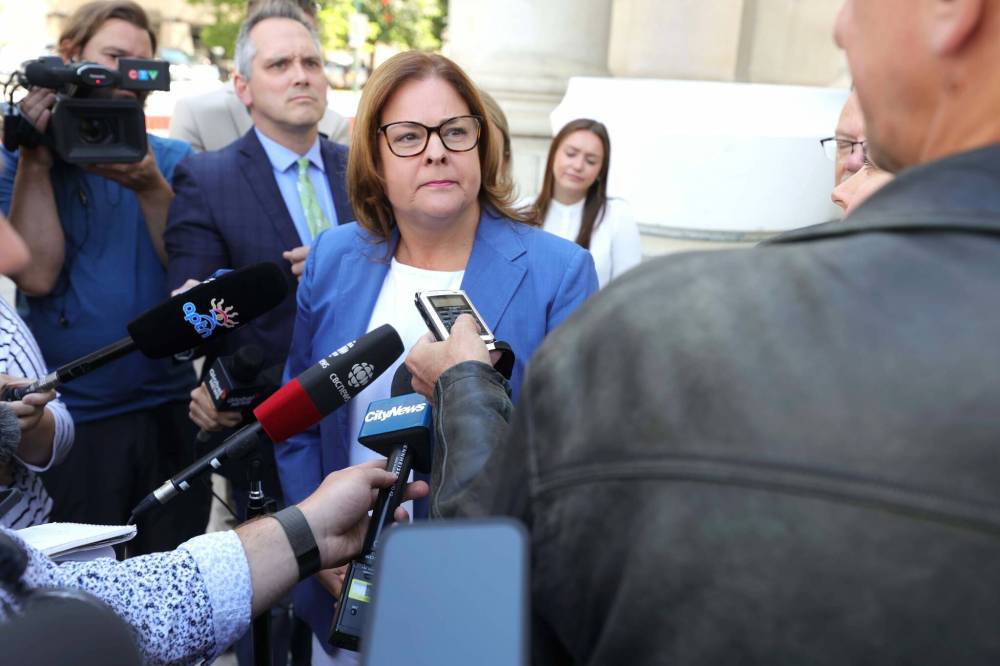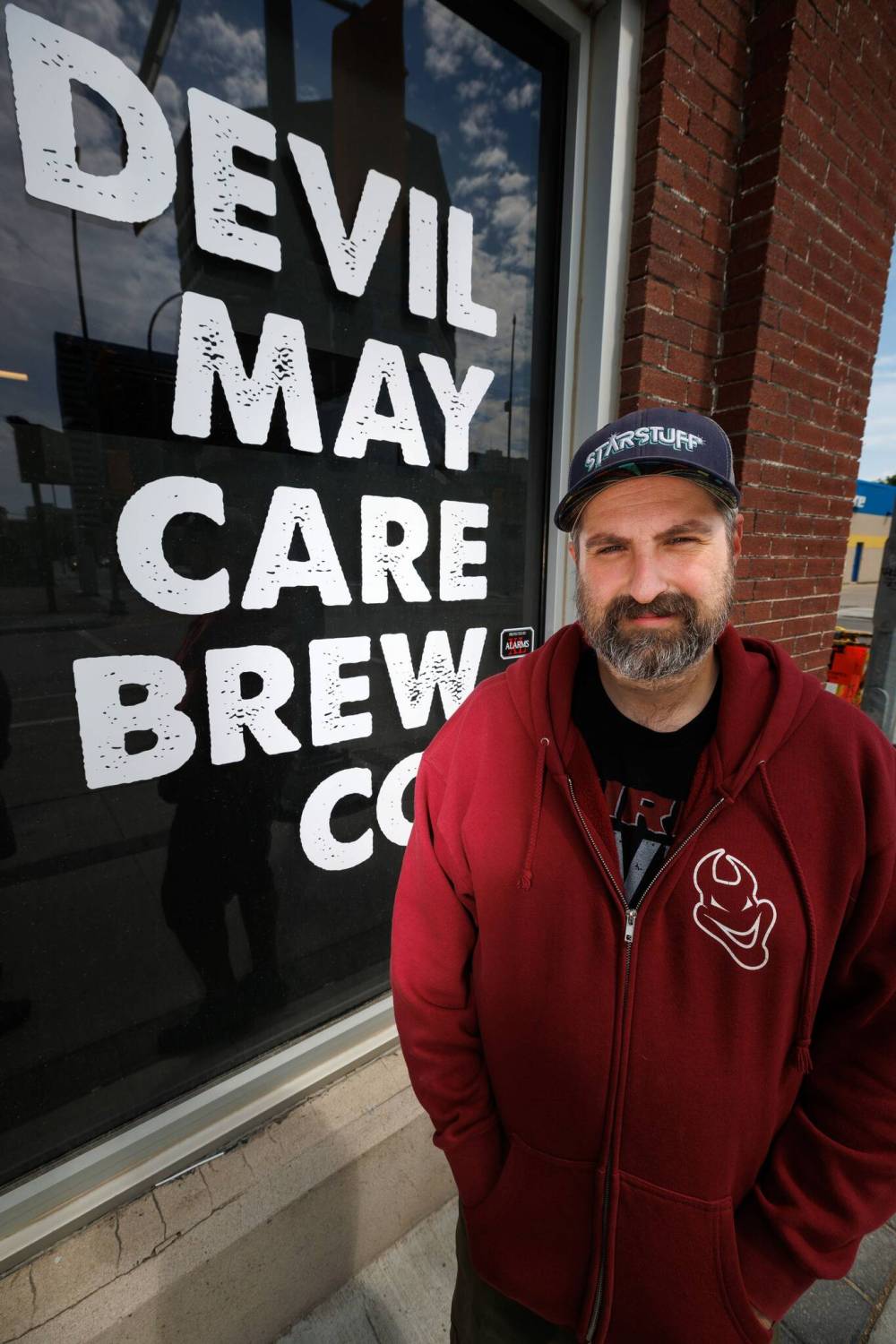Lights, cameras, police action: province unveils downtown Winnipeg safety strategy
Read this article for free:
or
Already have an account? Log in here »
To continue reading, please subscribe:
Monthly Digital Subscription
$0 for the first 4 weeks*
- Enjoy unlimited reading on winnipegfreepress.com
- Read the E-Edition, our digital replica newspaper
- Access News Break, our award-winning app
- Play interactive puzzles
*No charge for 4 weeks then price increases to the regular rate of $19.00 plus GST every four weeks. Offer available to new and qualified returning subscribers only. Cancel any time.
Monthly Digital Subscription
$4.75/week*
- Enjoy unlimited reading on winnipegfreepress.com
- Read the E-Edition, our digital replica newspaper
- Access News Break, our award-winning app
- Play interactive puzzles
*Billed as $19 plus GST every four weeks. Cancel any time.
To continue reading, please subscribe:
Add Free Press access to your Brandon Sun subscription for only an additional
$1 for the first 4 weeks*
*Your next subscription payment will increase by $1.00 and you will be charged $16.99 plus GST for four weeks. After four weeks, your payment will increase to $23.99 plus GST every four weeks.
Read unlimited articles for free today:
or
Already have an account? Log in here »
Hey there, time traveller!
This article was published 06/07/2023 (882 days ago), so information in it may no longer be current.
The Manitoba government has promised to spend $10 million over two years on a new strategy to make downtown Winnipeg safer.
The plan would add 24 police officers to patrol the area, 75 more closed-circuit television cameras and a new community safety office. Its funding is part of the province’s $52-million violent crime strategy, first announced in Budget 2023.
“Rising crime rates are making people feel unsafe in their own communities and it’s a legitimate concern. I’ve said it before and I’ll say it again: enough is enough, let’s defend our police officers, not defund them. At the same time, we continue working to address the root causes of crime and (support) our most vulnerable populations,” Premier Heather Stefanson said Thursday.
RUTH BONNEVILLE / WINNIPEG FREE PRESS Premier Heather Stefanson said the City of Winnipeg’s baseline funding will increase to ensure the extra police presence continues beyond the two-year strategy.
Stefanson said the City of Winnipeg’s baseline funding will increase to ensure the extra police presence continues beyond the two-year strategy.
The plan also proposes to enhance lighting in the city centre and purchase all-purpose vehicles (such as ATVs and electric bikes) to provide “nimble” transportation for downtown police.
Justice Minister Kelvin Goertzen said the expanded camera network will be “actively monitored” through a joint effort by the Downtown Community Safety Partnership and WPS.
“We’ll be able to deploy (a response), whether it’s DCSP or the Winnipeg Police Service, when they see that there are issues happening,” said Goertzen.
The partnership was established in 2020, with a goal to address many safety and well-being concerns through 24-7 outreach.
“I’ve said it before and I’ll say it again: enough is enough, let’s defend our police officers, not defund them.”–Premier Heather Stefanson
Greg Burnett, executive director, said its members de-escalate disturbances and mental health crises, treat basic wounds, and connect those in need with social supports.
“We can provide the right resources to individuals at the right time and reduce demands on emergency services,” said Burnett.
Goertzen said many Winnipeggers feel unsafe downtown, due to rising crime rates.
In 2022, violent crime reached its worst level in 13 years, according to a WPS annual report. City police received 13,449 reports of violent crime last year, compared to 11,281 in 2021, and a five-year average of 10,858.
Many elements of the new safety strategy appear to build on initiatives requested by the Manitoba Police Commission in 2019, including better co-ordination of foot patrols, improved use of closed-circuit surveillance cameras, and enhanced supports to address homelessness, drug use and poverty.
While the creation of the Downtown Community Safety Partnership and other initiatives occurred after the report was released, officials said the new steps add to those measures.
Winnipeg will gradually add 24 police officers to existing patrols, beginning with the graduates of a recruit class that starts this fall, while locations are still being considered for the community safety office, said WPS Chief Danny Smyth.
Mayor Scott Gillingham said the joint effort is an essential part of the strategy.
“Far too often, it is vulnerable people, those experiencing homelessness, addiction and mental health challenges that are the victims of crime… It’s critical that the Winnipeg Police Service and the DCSP and others continue to operate in a co-ordinated manner… to ensure the safety of all those who use our downtown and to also ensure that those who need assistance or social services can also get those services,” said Gillingham.
The announcement triggered a mixed response.
One downtown business owner welcomed the focus on safety and DCSP funding.
MIKE DEAL / WINNIPEG FREE PRESS Devil May Care co-owner Colin Koop’s Fort Street business has suffered from recent vandalism, including a chunk of cement being thrown through a window on Canada Day.
“They are a great organization that has downtown community in mind… My feeling towards them is that they do very good work but are a little bit underfunded and stretched a little thin,” said Colin Koop, co-owner of Devil May Care Brewing.
Koop’s Fort Street business has suffered from recent vandalism, including a chunk of cement being thrown through a window on Canada Day.
While he also supports efforts to improve lighting and create a community safety office, Koop said additional support is needed to address poverty, homelessness and mental health concerns. “There’s certainly a lot of those problems that still plague downtown.”
Others criticized the strategy for making an “over-investment in policing.”
“If we actually want less crime, we have to create better social conditions. And, so, we want the money to go to the community-based organizations that are supporting people right there in the community,” said Kate Kehler, executive director of the Social Planning Council of Winnipeg.
The president of the Winnipeg Chamber of Commerce said his organization had long called for increased policing, surveillance cameras and lighting — all of which he is pleased to see in the strategy.
“We recognize that there needs to be a multi-faceted approach to crime… but (we must also ensure) that Winnipeggers have a sense of safety so that they can come downtown,” said Loren Remillard.
joyanne.pursaga@freepress.mb.ca
Twitter: @joyanne_pursaga

Joyanne is city hall reporter for the Winnipeg Free Press. A reporter since 2004, she began covering politics exclusively in 2012, writing on city hall and the Manitoba Legislature for the Winnipeg Sun before joining the Free Press in early 2020. Read more about Joyanne.
Every piece of reporting Joyanne produces is reviewed by an editing team before it is posted online or published in print — part of the Free Press‘s tradition, since 1872, of producing reliable independent journalism. Read more about Free Press’s history and mandate, and learn how our newsroom operates.
Our newsroom depends on a growing audience of readers to power our journalism. If you are not a paid reader, please consider becoming a subscriber.
Our newsroom depends on its audience of readers to power our journalism. Thank you for your support.
History
Updated on Thursday, July 6, 2023 5:24 PM CDT: Updates copy, adds art




